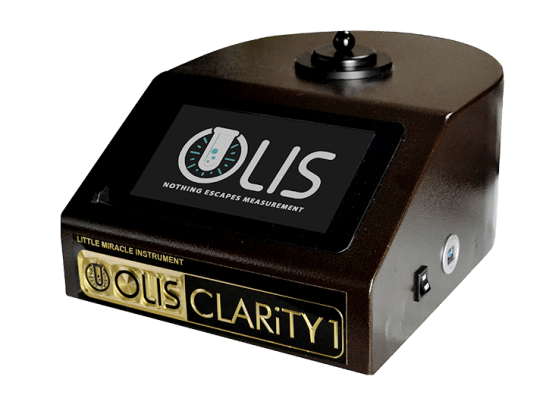Everything about Uv/vis
The Buzz on Uv/vis
Table of Contents5 Easy Facts About Circularly Polarized Luminescence ExplainedSome Known Incorrect Statements About Circularly Polarized Luminescence The Greatest Guide To SpectrophotometersHow Uv/vis/nir can Save You Time, Stress, and Money.Little Known Facts About Uv/vis/nir.

Spectrophotometry is a tool that hinges on the quantitative analysis of molecules depending on how much light is absorbed by colored compounds.
The Of Circular Dichroism
A spectrophotometer is frequently utilized for the measurement of transmittance or reflectance of services, transparent or nontransparent solids, such as sleek glass, or gases. Although lots of biochemicals are colored, as in, they take in noticeable light and for that reason can be measured by colorimetric procedures, even colorless biochemicals can often be converted to colored compounds suitable for chromogenic color-forming responses to yield compounds suitable for colorimetric analysis.: 65 However, they can also be designed to measure the diffusivity on any of the listed light varieties that usually cover around 2002500 nm using various controls and calibrations.
An example of an experiment in which spectrophotometry is used is the decision of the equilibrium constant of a solution. A specific chain reaction within a solution might happen in a forward and reverse direction, where reactants form items and products break down into reactants. At some time, this chain reaction will reach a point of balance called a balance point.
The smart Trick of Uv/vis That Nobody is Discussing
The amount of light that goes through the service is a sign of the concentration of specific chemicals that do not allow light to go through. The absorption of light is because of the interaction of light with the electronic and vibrational modes of molecules. Each kind of particle has a private set of energy levels associated with the makeup of its chemical bonds and nuclei and thus will soak up light of specific wavelengths, or energies, resulting in special spectral homes.
Using spectrophotometers spans numerous scientific fields, such as physics, materials science, chemistry, biochemistry. spectrophotometers, chemical engineering, and molecular biology. They are extensively used in lots of industries including semiconductors, laser and optical production, printing and forensic evaluation, along with in labs for the study of chemical substances. Spectrophotometry is often utilized in measurements of enzyme activities, determinations of protein concentrations, determinations of enzymatic kinetic constants, and measurements of ligand binding reactions.: 65 Eventually, a spectrophotometer is able to figure out, depending upon the control or calibration, what compounds are present in a target and precisely how much through estimations of observed wavelengths.
This would come as a solution to the formerly created spectrophotometers which were not able to absorb the ultraviolet properly.
The Circularly Polarized Luminescence PDFs
It would be found that this did not give satisfactory outcomes, therefore in Design B, there was a shift from a glass to a quartz prism which enabled much better absorbance outcomes - her response spectrophotometers (https://pagespeed.web.dev/analysis/https-olisclarity-com/ft59obxjpp?form_factor=mobile). From there, Model C was born with an adjustment to the wavelength resolution which ended up having 3 systems of it produced
It irradiates the sample with polychromatic light which the sample takes in depending upon its properties. Then it is transferred back by grating the photodiode selection which detects the wavelength region of the spectrum. Considering that then, the creation and execution of spectrophotometry devices has actually increased immensely and has actually turned into one of the most ingenious instruments of our time.

Get This Report on Circularly Polarized Luminescence
The grating can either be movable or repaired.
In such systems, the grating is repaired and the strength of each wavelength of light is determined by a various detector in the range. When making transmission measurements, the spectrophotometer quantitatively compares the fraction of light that passes through a referral solution and a test service, then digitally compares the intensities of the 2 signals and computes the percentage of transmission of the sample compared to the recommendation requirement.
